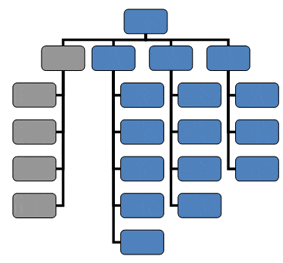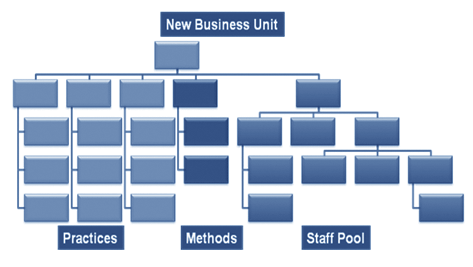I think at this point it might be helpful to discuss some of the issues of forming the group that is to incubate your Intimacy Engine™ business model. I say incubate because like many new initiatives it must be kept apart – nurtured and protected from the normal processes, procedures and pressures of the organization.
As we mentioned earlier there will be natural forces within the company that will work against its success – normal, but they can be destructive, as we see in many public cases of organizational transformation attempts.
Internecine warfare is a common reaction when you set about changing your business model. It’s not simply a go-to-market adjustment. When building a customer intimacy business model, their are several unique attributes that cannot, and must not, be compromised:
Similar to Consulting Firms – Like consulting firms the key people will be spending time advising clients and working with them in an intimate way – think trusted advisor. This means investing much more authority in field functions and less reliance on staff functions and a much flatter organization – more people doing, less people checking to see what they are doing.
Similar to the Army – The decisions are made on the battle field. The general cannot be called every time a corporal must make a decision. Further, like some consulting firms these businesses must deal with a large influx of people who must become experts rapidly in their career. This requires a level of constant training and development unknown in today’s corporations.
Pull Through Product – Unlike consulting, the purpose of the intimacy is to differentiate the company and allow trusted advisors and True Solutions™ to pull through product. Therefore the measures of success are different than consulting.
Rapid Growth – To make a difference to a large enterprise in a reasonable amount of time the business must grow very rapidly. This means hiring many people – early in the growth curve and that is difficult for companies today who look to hiring people as one of the greatest risk they have. Further, the business processes and procedures (which are often different existing processes) must be implemented at the start – these counterintuitive processes and procedures may go against the grain.

It is important that the new group report appropriately in the organization so that that it receives frequent attention from senior management. Many organizations believe this can be accomplished outside of the organization chart – and in some cases that is true.
Ask yourself, in your company, how important is the organization chart? Is it the first thing discussed? Does it drive how we view who and what’s important? If so, then organization placement of this initiative becomes critical to success.
Often the leader emerges from the effort to get the organization aligned on the vision and motivated to take action. The very passion required to get the organization moving is also needed to keep the effort going.
The attributes of your leader are important:
- They must be respected by the organization
- They must be aggressive – this effort will require immense energy
- They must be flexible – like any new venture this effort will require many adjustments
- They should not be bureaucratic or rules-bound – the nature of new and the nature of solutions-led businesses is that they are flat organizations with much authority given to people lower in the organization.
- They must be determined – this effort requires 3 to 5 years to be completely successful, and the leader must be able to stay focused for the duration.
The initial portfolio during the “form” phase of the transformation to an intimacy business model (which we call the Intimacy Engine™) is crucial. The dilemma is the need to develop True Solutions™ – which must address an important business opportunity or correct a business problem for your client – and have the ability to implement these solutions consistently.
The structure of this new group will resemble a type of management consulting firm. There will be practices for each grouping of offers (discussed a little later), a group that helps create offers, manages methodologies and trains the staff, and the junior consultants organized into a pool of resources.

You’ll notice that I neglected to denote all the staff functions normal to a product business – HR, Finance, etc. It is not that these are not important, it’s just I want to speak to them separately. Let’s take each one of the denoted groups and explain their purpose:
Practices – this group holds the expertise of the offer – usually vertical in nature. If the practice is to serve hospitals this group will have the experts that know how to sell and deliver to hospitals. It is important to note that you may or may not have a sales organization for this business – there are reasons for both. But the ability to convince clients to buy the offer will live in the practice.
Methods – the ability to do the same thing many times is the mission of the methods group. These might include the following activities: hire, train, and on-board someone, or develop offers, or conduct steering committee meetings, etc. These groups are made up of rotating people from the practices and the pool. They must be able to do the work to understand how to build and maintain the methods that enable success.
Pools – the pool is where consultants stay as they learn the trade and develop what are called “major” and “minors” – their specialization – vertical and/or type of work.
No one should believe that the transition to a customer intimacy business model is straightforward. There are many stumbling blocks along the way. In our experience at McMann and Ransford, we find that only the most determined companies can make the journey without stumbling.
